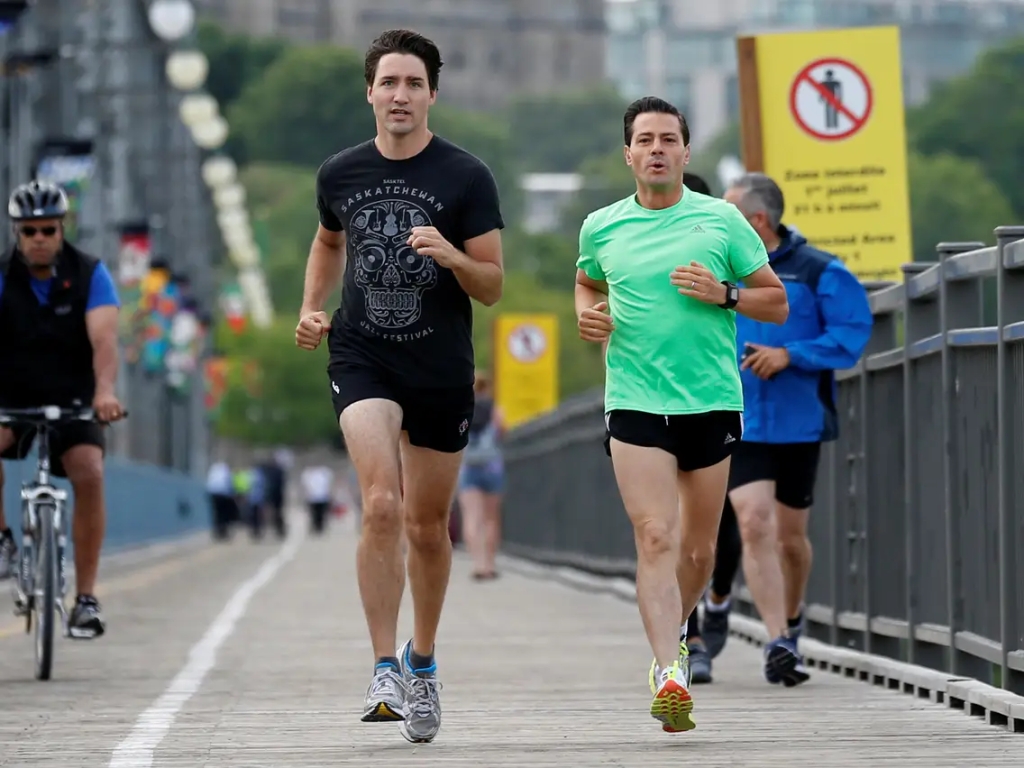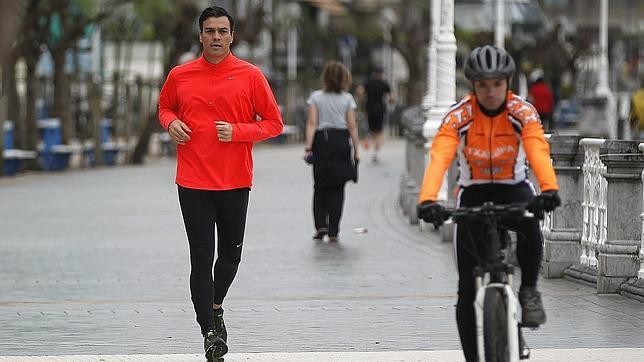The age of politicians in running shoes has been inaugurated, seamlessly gaining momentum as an essential element of political communication and the allure of our candidates.
Where once smoking or enjoying a whisky was seen as a public virtue, now, going for a run (and promptly sharing it) has become a symbol of soft and firm leadership, perfectly aligned with our open, superficial, and somewhat more tolerant and less formal public sphere, which remains constantly tuned to social media and its insatiable appetite.
[By Pablo Sánchez Chillón] Urban & Strategy Advisor. Lawyer.
Need to reach Pablo?, here is the link.
… And there you see politicians running.
You can feel the scent of the outdoors and the rhythmic throb of heart monitors.
The early hours of the morning, where fading lights and looming shadows mix, as the night fades and the new day, with its promise of encounters, triumphs, and opportunities takes its time to unfold.
There’s a sharp tang of liniment and sleek, tailored silhouettes. Gasps punctuate this murky hour, where the drunks savoring oily churros compete with the urban avant-garde of dog walkers and diligent janitors sweeping doorways and watering felt tulips in the planters before retreating to nap in their shady ground-floor hideaways.
Athletic shadows stretch, contract, and strike with repetition amidst the swish of tights and the billowy sway of matching windbreakers. There’s a collective and age-old rhythm of awakenings, amidst the bubbling of coffee pots, the clatter of spoons, and the musical alarms that echo through the gated communities, the neighborhoods, and the hospitals.
You lift your gaze through the clotheslines, the hoses of the contractors, and the delivery trucks, and there you see politicians running.

The neat leader at the center of the image, smooth and pulsating, reborn from the humors and public commotion of the previous day. Cameras open and selfie sticks upright, in an early heartbeat of social media that begins to organize our day, our consciousness, and our estate, colonizing the spare gaps that, like hungry chasms of popularity, continually open up in that digital sphere fed by fragments of everyday life and the yeast of self-referential messages shared in strict real-time.
Dawn breaks. Sirens, car horns, and chairs dragging slowly and squeakily resound, and there are politicians already running through the avenues, parks, embankments, and snowdrifts. Their gaze firm, their speech panting, musical, and rushed. Their stride light and dizzying, as dictated by secular orthodoxy and the prevailing canon of shared effort in this noisy and infantile Anthropocene we inhabit, made up of likes, memes, and a perpetual squabble of experts in disciplines that nobody will remember the day after tomorrow, buried by other brand-new knowledge led by emerging opinion-makers who will entertain us for the next five minutes.
A commotion of garages and a melánge of barriers and parking meters. The morning begins to emerge, and we already see political leaders running without crossing paths with other politicians who are also doing the same. Some, others, exert themselves and assert themselves vigorously to the awakening day, alone or accompanied by a legion of collaborators and subordinates, respectful of distances, hierarchies, times, and the endogamous introspection of politics and its circumstance.

Running will set you free.
Nelson Mandela’s story is one of digital and resilience in sneakers, particularly during his imprisonment in apartheid-era South Africa. Biographers recount that Mandela, confined to a mere 3-square-meter cell, made it a daily ritual to run for an hour. This strict exercise regimen not only frustrated his captors but also served to confront his inner demons, helping him endure 27 years of confinement on the bleak Robben Island.
While Mandela’s disciplined resolve stands as a stark contrast to the public image projected by today’s political leaders, it’s worth revisiting how sport has evolved in its relationship with power and politics.
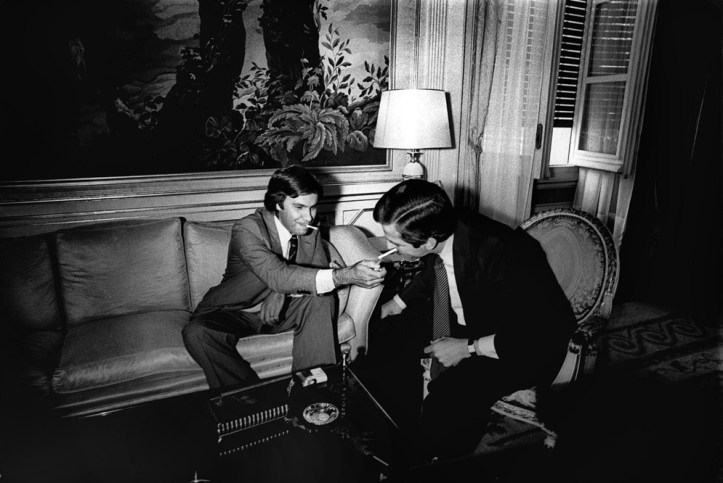
Consider the political figures of Spain’s Transition to democracy, who, following the austerity of Franco’s regime, were often depicted in smoke-filled taverns, clutching cigarettes and glasses of hard national brandy. In contrast, contemporary democracy has integrated politics seamlessly into the realm of entertainment, presenting a vastly different landscape.
The significance of sport as a global social phenomenon has undoubtedly grown over time, yet its historical manipulation for propaganda purposes cannot be overlooked. In 2002, Teresa González Aja curated a compelling collection of essays titled «Sport and Authoritarianism,» shedding light on the interwar period of the tumultuous 20th century. This era saw governments embracing sport’s spectacle, using it as a tool to bolster national pride and ideological fervor.
Sport became a symbol of prestige among nations, a platform for propaganda, and a testament to the strength of ideologies and regimes, from communism to fascism. Ultimately, it played a pivotal role in shaping the theater of international relations, transcending mere competition to become a powerful tool of political discourse and influence.
Whether it’s the half-smile provoked by the image of a shirtless Mussolini leading the Battle of Grain in Fascist and autarkic Italy (where the regime aimed to «liberate Italy from the slavery of foreign bread» by increasing national production through expanding cultivated land and modernizing farming techniques), or the defiance of Jesse Owens on the podium at the 1936 Nazi Berlin Olympics, the relationship between sport and power, and specifically the temperature of international relations, has often been measured against the impact and repercussion generated by sporting events and their context of production. Their iconography and symbolic packaging, so seductive for communication, propaganda, and advantageous political messaging.
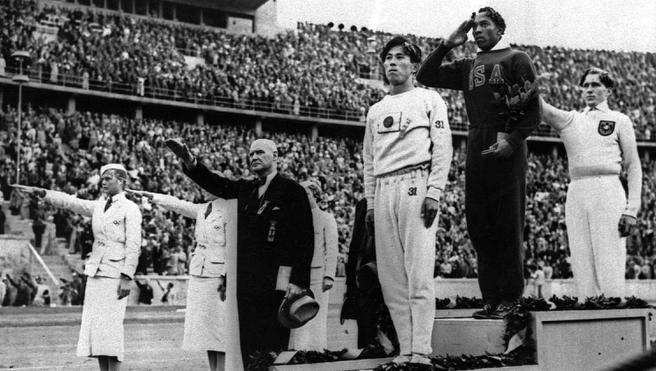
Perhaps today, much of this relationship between power and sport must be deciphered by navigating through the dense smoke of cigars in the VIP boxes of football stadiums where the establishment likes to showcase itself, although that’s another matter. And paraphrasing the Marquis of Custine’s observations on Tsarist Russia, we could say that «Politics is a grand theater, and within it, there are only actors.»
From the meticulously studied photo of Macron boxing a few days ago, to the races towards the Élysée of a Sarkozy who seems to be fleeing from his dark past, everything we can observe in this fertile relationship between sports and power has a counterpart in the past, a precedent that indicates the usefulness of connecting the image of the vigorous leader with the mood of a country and the challenges it faces.
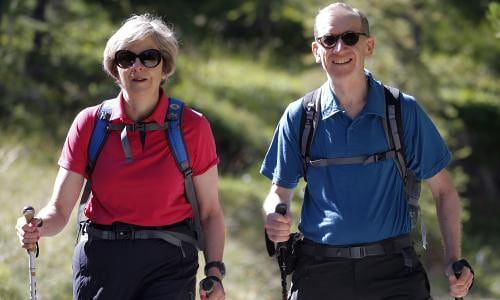
Those who have already passed the age of 40 will recall significant episodes in our recent history where sport and politics have walked hand in hand. Instances where the cosmogonic and systemic vision of ideologies and powers has collided around sport, the need for symbolic victories on the playing field, and the feats of athletes condemned to act as heralds of the power that encouraged, supported, and sustained them, whether they liked it or not. From the groundbreaking black power demonstrations in Mexico 68 to the resounding Olympic boycotts in 1980 and 1984 between the Soviets and Americans, or – in a tenderly domestic Spanish context – Marcelino’s goal against the USSR and the giant goalkeeper Yashin (the ‘Black Spider’) in the 1964 Euro Cup Final, which declining Francoism elevated to the status of a racial achievement. The established power and politics have utilized sport as a vehicle and sounding board for their message, aware of its capacity to stir, move, and awaken the deepest passions of the citizenry.
Nevertheless, much has changed since then. In our present day, the emergence of digital technology, the experience of real-time democracy, and the demands of ubiquitous and personalized connectivity have also transformed the mise-en-scène of political communication, as well as the nature and content of the messages in which leadership, sport, and public image combine to generate a product attractive to the voter/spectator.
Certainly, the displays of strength and vigor by leaders, as often exploited in Fascist Italy, have little resemblance to the contemporary narratives on social media of our democratically elected officials battling, in sneakers, against their packed schedules and the inertia of their physical condition. However, fundamentally, and with all nuances considered, they respond to the same logic of reinforcing public image and versatility of characters who are obliged, by duty, to navigate through scenarios of institutional solemnity and decisive gravity, and whom we like to see, occasionally, in a human and conventional attitude, whether it’s baking cookies in prime time or racing teenagers.
Sports: A Global School of Public (and Published) Leadership.
The politics of public overexposure resembles a rash of Instagram stories, reveling in its near-inanity and daily artificiality.
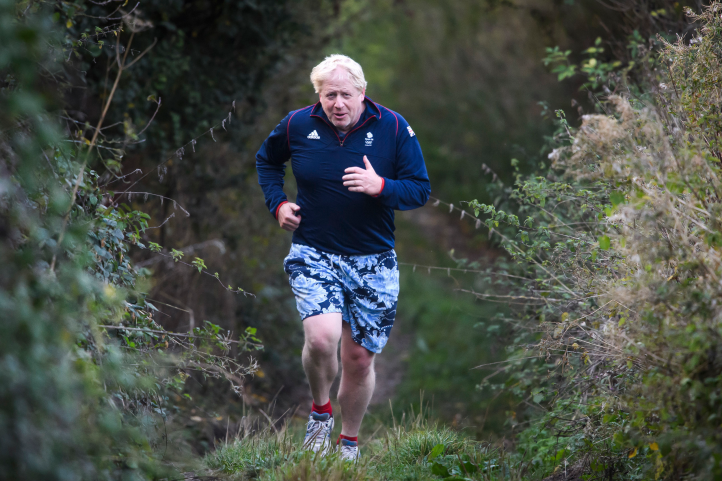
Pop democracy – all you need is love – operates as a republic of superficiality, authentically recurrent and producing threads, narratives, and storytelling artifacts tailored for mass consumption on social networks. These platforms require constant feeding, akin to Alaskan beavers incessantly gnawing on wood to prevent their incisors from overgrowing.
It’s a global and massive marketplace of messages, narratives, and storytelling. Here, the athletic, diligent, and consistent leader, who carves time from their packed schedule to don a pair of Asics, emerges as an increasingly recurrent and predictable product of political communication. This portrayal brings them closer, humanizes them, and rejuvenates them before us, endowing their leadership with a new range of superpowers, almost like a saint or sage.
The era of politicians in sneakers has been inaugurated, seamlessly gaining momentum as an essential element of political communication and the allure of our candidates. Where once smoking or enjoying whiskey was seen as a public virtue, now, going for a run (and promptly sharing it) has become a symbol of soft leadership, perfectly aligned with our open, superficial, and somewhat more tolerant and less formal public sphere, which remains constantly tuned to social media and its insatiable appetite.
In this regard, politicians, far from being satisfied with sporadic roles as commentators on sporting issues (the classic repertoire of closing remarks in a political interview where the journalist poses the unavoidable question about the footballing affiliations and preferences of this or that leader), and escaping their roles as mere award presenters at sporting events, have decided, in line with their teams of advisors, to conspicuously practice sports themselves, publicly and widely publicized. Hence, in this multi-screen state of normalcy in which we all participate daily, no one is surprised to see a President donning leggings while sharing the photo on Twitter. Run, Forrest, run. It’s all part of the show.
Spain’s political race: much smoke and little epic
Take the example of present-day Spain. While we are living in times of upheaval, populism, and perpetual political campaigning, we do not quite reach the intensity of the iconostasis of steppe masculinity to which Russian Satrap Vladimir Putin has accustomed us. Before stepping into the infamous region of crimes agains Humanity, he was equally capable of hunting a bear in Siberia bare-chested as he was of diving, machete in mouth, into the icy waters of a Siberian river while posing for his official photographer.
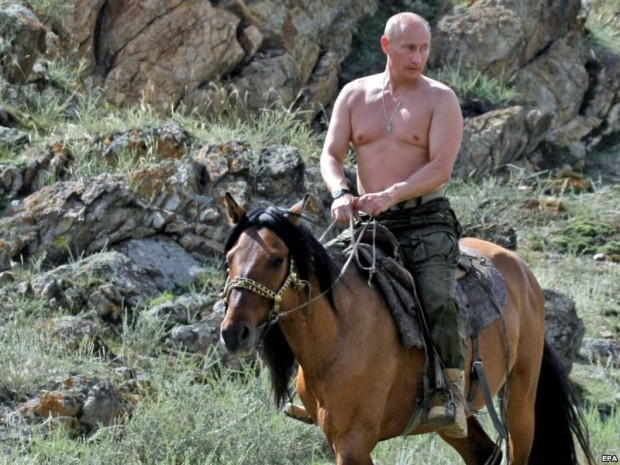
However, in our imperfect democracy, and from the perspective of political communication, the leader who is athletic, hardworking, and consistent, who manages to find time in their packed schedule to lace up sneakers, is presented to us as an increasingly recurring communication product, one that brings them closer, humanizes them, and rejuvenates them before us.
Watching a leader or their challengers running at dawn with their gaze fixed on the horizon, or reaching a summit with a forehead glistening with sweat, evokes, at the very least, the inevitable political metaphor of the leader’s long-distance race (or their loneliness), or perhaps the indelible imprint of their legacy. And so, on to infinite allegories.
A few weeks ago, amid a memorable conversation, a good friend who serves as a spin doctor for a well-known national leader (something like the Chief of Staff/Communications Director in American political series, for clarity), discreetly recounted to me the drama, in terms of communication strategy, that his team of advisors faced whenever the campaign (permanent) script demanded that the candidate, more inclined to good food and soft couches than the delights of sports, put on a nylon tracksuit to play a casual game with enthusiastic and conveniently equipped party members, armed with selfie sticks and Instagram accounts to share the feat in real-time. In summary, a disaster in terms of electoral orthodoxy, which nevertheless they could not afford to abandon.

Let’s delve into what has been happening in the public sphere in Spain in recent years as an example of how sport, vigorous attitude, and a certain inclination of the party leader towards proactivity and physical exercise have ended up dominating the staging of political leadership. Whether it’s the unkempt sports appearance of former President Mariano Rajoy, now in his sixties, briskly walking through the Galician countryside, current Spanish Prime Minister Pedro Sánchez posturing in running tights or recklessly climbing windmill blades with an interviewer; Isabel Ayuso’s Vogue-like run through Washington or leftist Pablo Iglesias’ contrived street basketball tournaments, more concerned with posing in a Spanish Second Republican flag jersey than unraveling the mysteries of dribbling, each political figure of our time has found in their relationship with sport and how they communicate it, another lever for the construction of their leadership and public image, as well as a fertile ground for the relentless creators of memes on social networks.

It was also Spanish President José María Aznar who, before succumbing to the state of sober permanent sports vigor he now resides in, inaugurated a new era of Power Rhetoric in Sneakers in our country, extending to this day. It’s presented to us as so different, in terms of leadership communication, from the presidential staging of a Leopoldo Calvo-Sotelo playing the piano in the seclusion of his free time, or that of a Felipe González entangled among bonsais, cigars, and Bodeguilla’s aromas.
It is said that President José Luis Rodríguez Zapatero, who used to play basketball with his guests on the court he had built in his official residence at the Moncloa Palace, convinced of the need to mark stylistic differences with his predecessor (whom no one dared to defeat in paddle tennis), would delightfully let himself lose, either out of courtesy, sportsmanship, or for the sake of the Alliance of Civilizations, something he learned from his admired Barack Obama, also a basketball enthusiast, although ZP was a tall politician and the American, a leader of stature.
On the international stage, the relationship of leaders with sport has also become a matter of public relations and communication, unthinkable a few years ago.
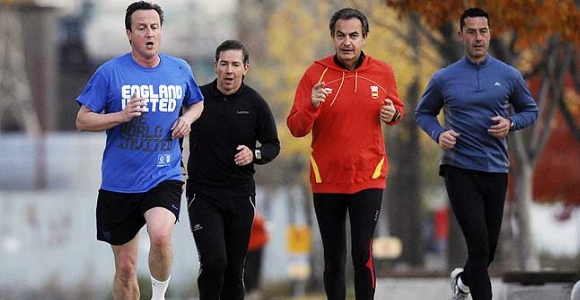
Indeed, the insultingly athletic grace of a Justin Trudeau in Canada (who never goes for a run without his photographer) is contrasted, in terms of presidential sportsmanship, with the plump and gilded image of Donald Trump with a 7-iron in hand, the sober effigy of Angela Merkel among Bavarian trails, Theresa May’s Decathlon-like trekking in the Cotswolds, Boris Johnson’s earnest staging, or last but not least, the studied football indigenousism of an Evo Morales who loses his Andean serenity when he puts on his cleats.
One might wonder, finally, if in the Europe of super-capitals and new urban power, things are very different: have you ever seen your mayor running in tights through the city? Wait a few months. Pre-campaign season is always approaching, and to the already conventional image of a political leader shaking hands and hugging (terrified) children in public markets, will undoubtedly be added the image of the leader, the aspirant, and their entourage in a deliberately sporty attitude.

Should we trust those politicians in running shoes and tight leggings? Mens sana, corpus democraciae, robustum.
[By Pablo Sánchez Chillón] Urban & Strategy Advisor. Lawyer.
Need to reach Pablo?, here is the link.

